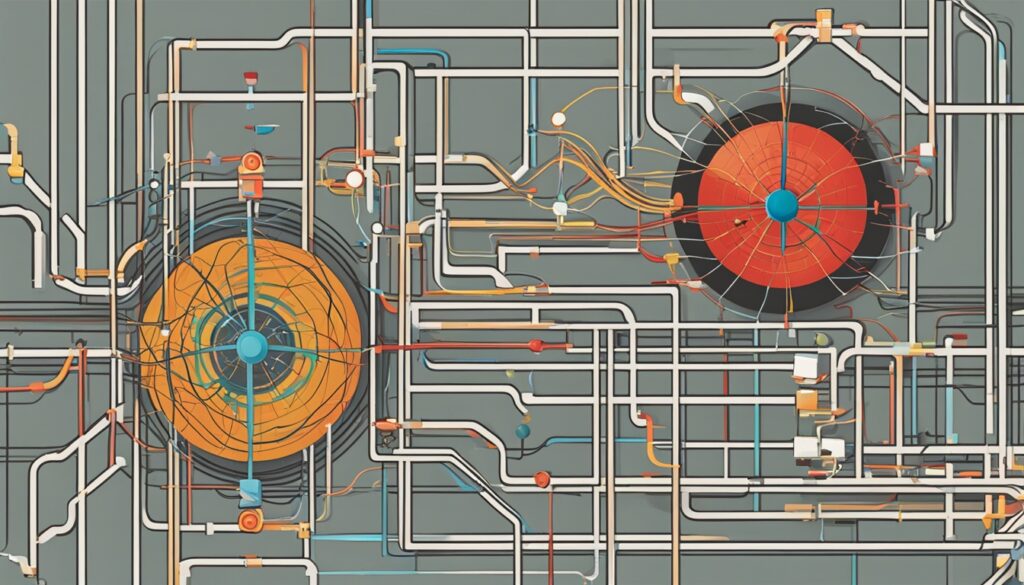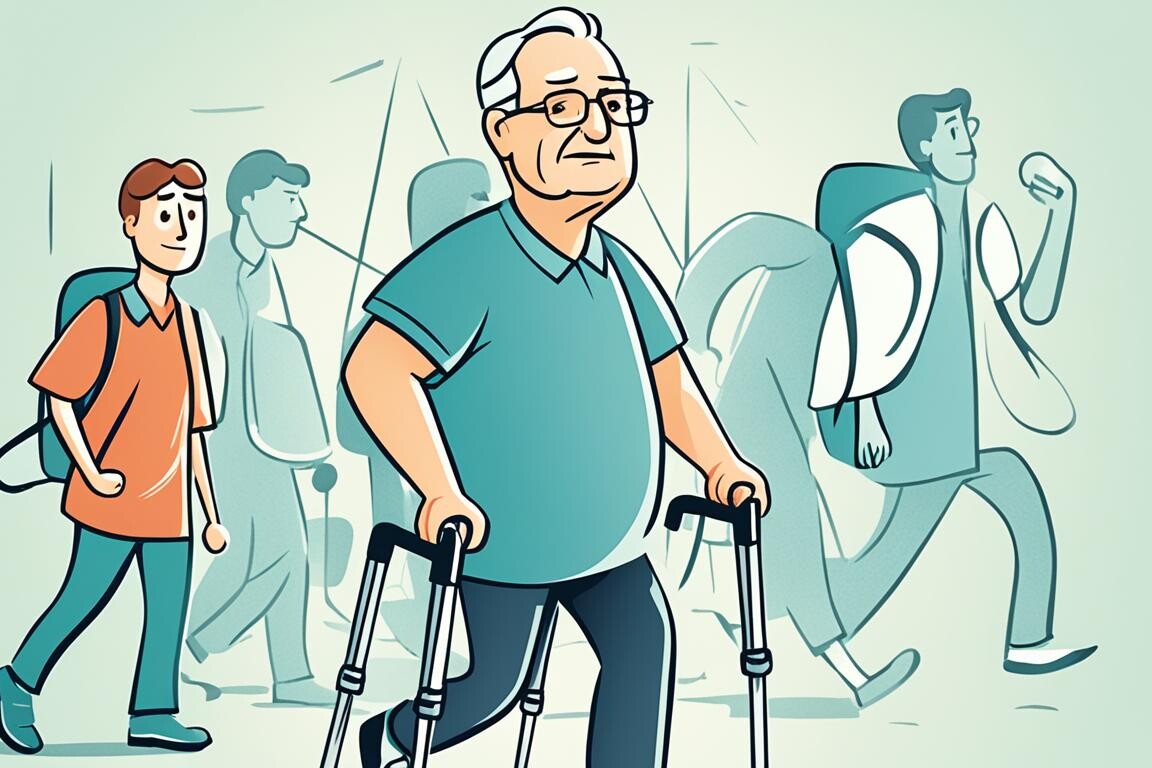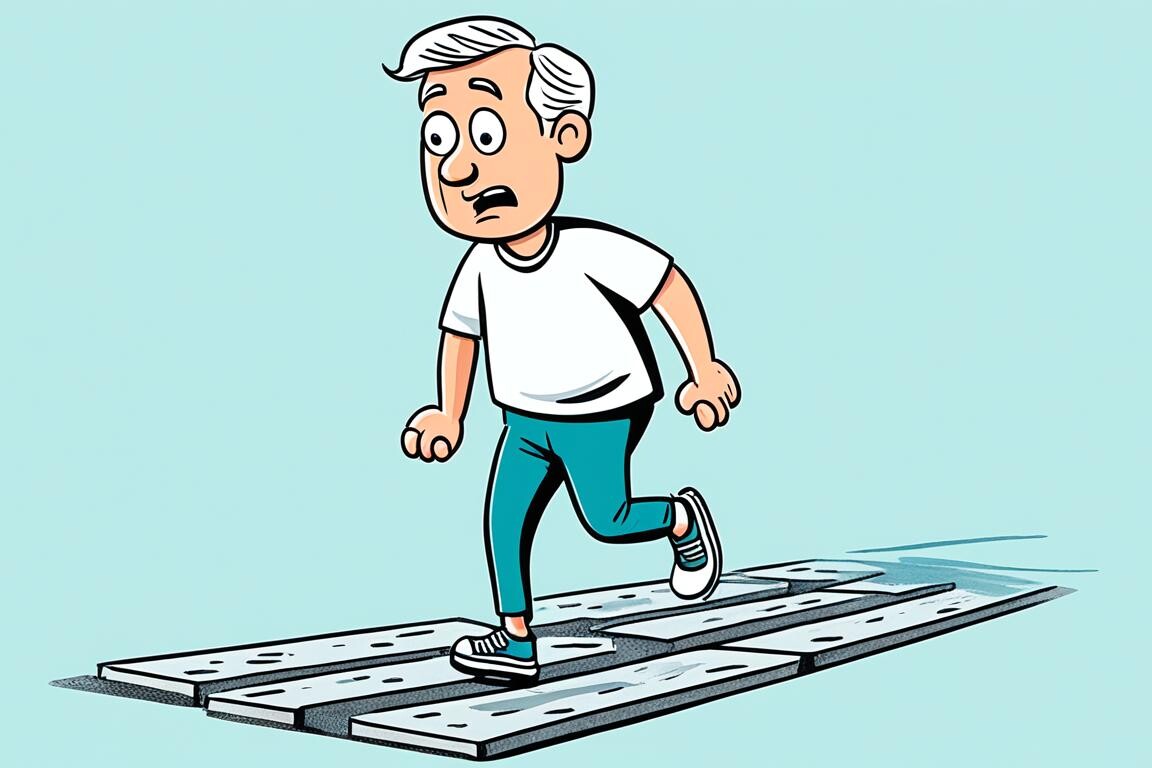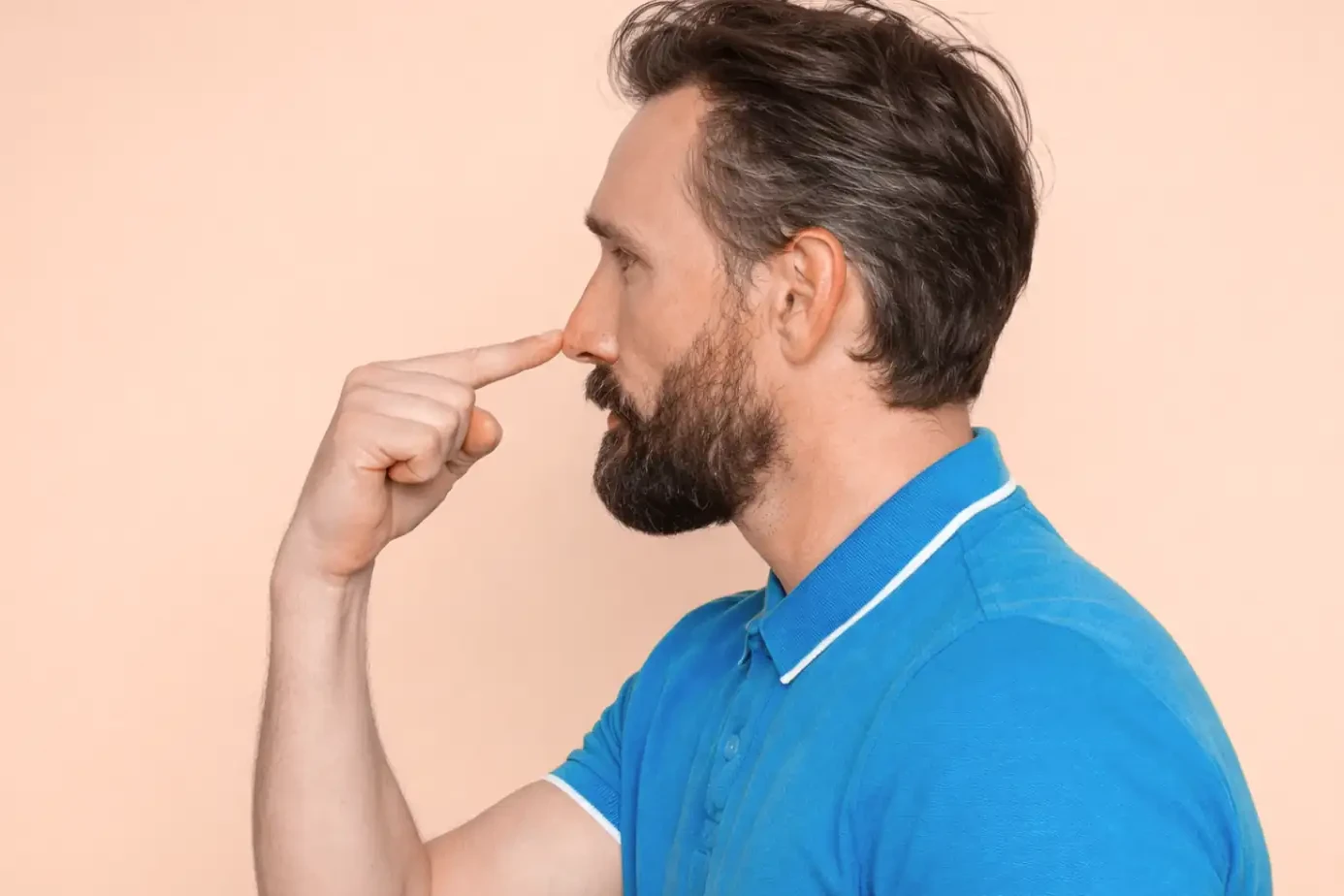Gait is how you walk, and it’s key to moving smoothly and staying balanced. But some injuries or health issues can mess with your gait. This can lead to problems like dragging your toes or feeling unsteady. Some of these problems are just for a short time, but others might need long-term care. Knowing why gait issues happen is a big first step in handling them well.
Many things can cause gait troubles, from conditions like Parkinson’s to problems with your bones and joints. In this guide, we will look at what makes gait problems happen. You’ll learn more about why this part of your health is so important.
Table of Contents
ToggleIntroduction to Gait Disorders
Gait is how we walk, and it’s very important for moving around. Different things can change how we walk, like injuries and getting older. These changes can cause gait disorders. It’s key to know about gait and these issues to manage them well.
Understanding Gait and Its Significance
Gait shows how well our muscles, brain, and thinking work together when we walk. A healthy gait is smooth and lets us move well. But, if something is wrong, we might walk strangely. For example, we could drag our toes or feel wobbly.
Prevalence and Impact of Gait Disorders
Issues with walking are quite common, especially as people get older. At 60, most people walk normally. Yet, by 85, only a few still do. Men and women seem to face different walking problems as they age.
Gait problems can really lower life quality and freedom, especially for older people. They make falling more likely, which is a major risk for severe injuries. Surprisingly, a slow walk in older folks without dementia could predict getting dementia later.
Neurological Gait Disorder Causes
Neurological conditions often cause gait disorders. They have a big impact on life quality, and can even be deadly. The NCBI Bookshelf says they’re more common than other causes.
Parkinson’s Disease and Parkinsonism
Parkinson’s disease can show up with small changes in how someone walks. A key sign is a slow to start balancing reaction, leading to falls. A shuffling walk, less arm movement, and problems starting or turning are typical.
Stroke and Cerebrovascular Diseases
Vascular diseases, like stroke, can affect your walk. These issues can often be found with an MRI. Smoking, high blood pressure, high cholesterol, and diabetes raise your odds of these gait problems.
Dementia and Cognitive Impairments
Dementia and Alzheimer’s can make walking hard and risky. These patients may walk slower, but somehow end up walking too fast and falling. Boosting their thinking ability is very important for their gait rehab.
Peripheral Neuropathies
Peripheral nerve issues can make it hard to walk. This can cause balance problems, coordination trouble, and a funny way of picking up your feet. It’s all because the lower body’s sense isn’t working right.

Musculoskeletal Gait Disorder Causes
Neurological conditions often Gait Disorder Causes Problem. Yet, musculoskeletal issues are also key. The NCBI Bookshelf shows that osteoarthritis in the hips and knees, and foot and ankle problems, matter a lot.
Osteoarthritis of the Hips and Knees
Osteoarthritis is a joint disease that changes how you walk. It brings pain and less movement in your hips and knees. This makes walking difficult. So, people may walk with a limp or favor one leg to reduce pain.
Foot and Ankle Deformities
Problems like bunions, hammertoes, or weak ankles can also affect how you walk. These issues change how weight is placed on your feet. This can make your walk uneven or unsteady. It is important to check and treat these foot and ankle problems for a better gait.
Systemic and Metabolic Gait Disorder Causes
Gait disorders can come from problems that affect the whole body. Such issues include systemic and metabolic conditions. It’s important to look into these areas to help with gait problems.
Electrolyte Imbalances
Things like low sodium, potassium, and magnesium levels can make it hard to walk well. Having the right balance of these electrolytes is key for your muscles and bones to work right. This directly impacts how well you can walk.
Vitamin Deficiencies
Running low on vitamins like B12, E, and copper can mess with your ability to walk. Making sure you eat foods rich in these nutrients can better your walking and body movement.
| Electrolyte Imbalance | Impact on Gait |
|---|---|
| Hyponatremia (low sodium) | Affects proper musculoskeletal function, leading to gait disorders |
| Hypokalemia (low potassium) | Disrupts muscle contraction, contributing to gait disturbances |
| Hypomagnesemia (low magnesium) | Impairs neuromuscular coordination, resulting in gait imbalances |
Improving your gait starts by looking at these broader health and body issues. It’s about making sure your body is healthy for applying a balanced walking steps.
Gait Disorder Causes
Aging and Gait Changes
As you age, the chance of having a gait disorder goes up. By the time people reach over 80, more than half may have this issue. It shows how much age affects the way you walk.
Getting older means walking slower and taking shorter steps. Yet, the amount of steps you take each minute stays similar. Older adults also walk with steps that are about 40% wider than young adults. These changes may lead to falling more often, which can limit your freedom.
Acute Illnesses and Medication Side Effects
Short-term sicknesses and some drugs’ side effects can cause gait issues too. Things like infections, fever, or not having enough water can mess up how you walk for a bit. Medications for brain or mood problems might also make walking harder.
When you get sick or your meds change, your ability to walk might get worse. But fixing the main problem and making any needed drug changes can return your walking to normal. This could help you avoid falling and other problems.
Diagnosis and Assessment of Gait Disorders
Figuring out why someone has a gait disorder is really important. It helps doctors treat and manage it well. Doctors start by carefully looking at a person’s walk and asking about their health. Then, they do exams to find out more. They use these steps to pick the best tests to do.
Clinical Evaluation and Observation
The first step in checking a gait problem is a full evaluation. Doctors and experts watch how you walk. They ask about your health history and check your body. This helps them figure out what’s causing the walking issues. From there, they know what tests to do and how to help.
Diagnostic Tests and Imaging
For diagnosis, doctors might call for some tests and scans. These can include:
| Diagnostic Test | Purpose |
|---|---|
| Electrodiagnostic studies (EMG, nerve conduction tests) | Finding out if there are nerve or muscle problems that might be causes |
| Magnetic resonance imaging (MRI) | Show if the brain, spine, or bones have issues affecting how you walk |
| Computerized tomography (CT) scan | Looking closer at bones and other structures to see if they’re causing problems |
| Blood tests | Checking for things like not enough vitamins or minerals in your body |
These tests, along with what doctors see, pinpoint the real cause. They guide the treatment. The goal is to make you move better and feel well.

Management and Treatment Strategies
Gait disorder treatment requires a multi-step plan. It uses different methods to help people get around better. This can involve taking certain medicines, using special exercises, and getting help from tools and devices.
Pharmacological Interventions
If a specific health issue Gait Disorder Causes problem, doctors might give medicine to help. People with Parkinson’s disease might take drugs like levodopa or dopamine agonists to reduce their symptoms. Medicines for fixing low vitamin levels or imbalanced electrolytes can also help improve someone’s gait.
Physical and Occupational Therapy
Therapy that focuses on movement is key in managing gait issues. Therapists work with patients on exercises to make their muscles stronger, improve flexibility, and better their balance. They also teach how to deal with limits in movement and ways to move better.
Assistive Devices and Mobility Aids
Support from devices like walkers, canes, or orthotics is very helpful for those with gait issues. Sometimes, wheelchairs or scooters are needed for more freedom. These items can make a big difference in how well someone can move.
Conclusion
Gait disorders can come from many causes, like problems with your nerves, bones, or whole body. It is key to know what causes the issue to find the best way to treat it. Doctors look closely at your walking and check your body to pick the right tests and treatment.
Helping with gait disorders needs a team from different fields working together. With the right care, people can walk better, lower the chance of falling, and stay active. Finding and treating gait issues early, with a plan just for you, is the best way to help you walk better.
Want to learn more about gait disorders? You can get great tips from top doctors and researchers in this area.
FAQ
What is gait and how can it become abnormal?
Gait is how you walk. It can change because of an injury or health problem. This may lead to dragging toes, walking with high steps, or feeling off balance. Some changes in gait can be fixed, but others need lifelong care.
What are the most common neurological causes of gait disorders?
Neurological issues often cause gait disorders. These include problems like sensory ataxia from polyneuropathy, Parkinson’s, vascular encephalopathy, and dementia. They can affect how someone walks or moves.
What are the common non-neurological causes of gait disorders?
Gait problems not related to the brain often stem from muscle and joint issues. Things like hip and knee arthritis can lead to pain and trouble moving. This affects how a person walks.
How can electrolyte imbalances affect gait?
Imbalances in electrolytes like sodium, potassium, and magnesium can change gait. Proper balance of these substances is key for healthy muscles and bones. This in turn affects how someone walks.
How does age impact gait disorders?
Gait problems become more common as people get older. They might start after 60 and increase after 80. With age, walking might get slower and steps might get shorter. However, some aspects like cadence may not change as much.
How is the diagnosis of gait disorders approached?
Doctors first watch how a person walks and listen to their health story. Then they do tests to check the body, brain, and joints. These steps help find out the cause of gait issues. They also guide further tests and treatments.
What are the treatment options for gait disorders?
Treating gait problems can involve using medicines, doing therapy, or using special tools to help move. It’s about finding the best way to improve walking based on what’s causing the problem.
Source Links
About The Author

This article is medically reviewed by Dr. Chandril Chugh, Board-Certified Neurologist, providing expert insights and reliable health information.
Dr. Chandril Chugh is a U.S.-trained neurologist with over a decade of experience. Known for his compassionate care, he specializes in treating neurological conditions such as migraines, epilepsy, and Parkinson’s disease. Dr. Chugh is highly regarded for his patient-centered approach and dedication to providing personalized care.
→ Book a consultation to discover which remedies suit your needs best.




